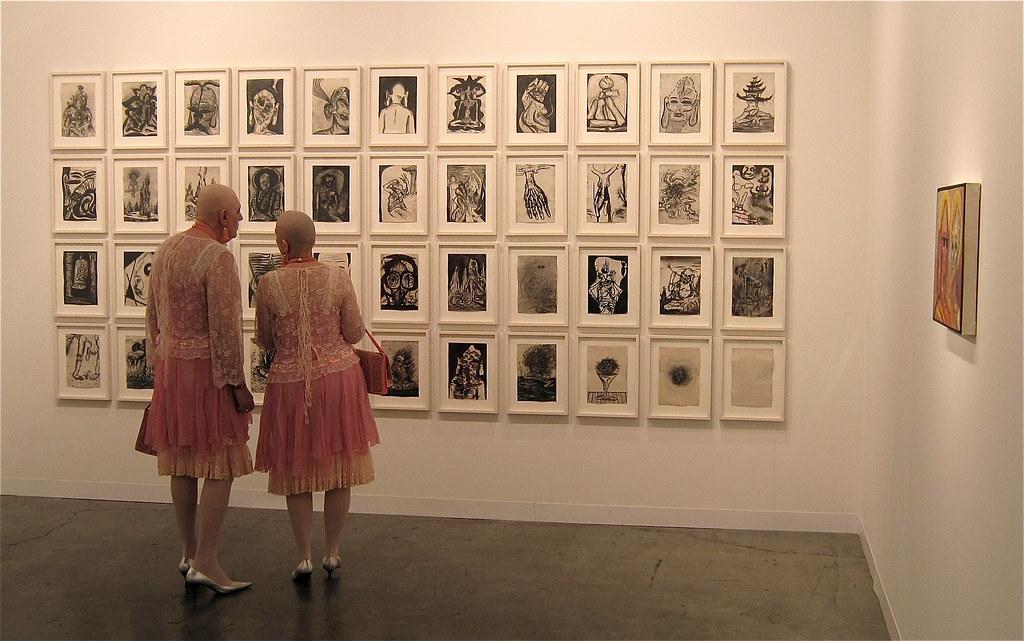Every December, I ironically look forward to seeing what vulgar exhibitionism will be done at Art Basel Miami Beach, one of the most well known international art fairs. Three years ago in 2019, it was the banana duct taped to the wall done by artist Maurizio Cattelan that ended up selling for $120,000. This year it’s an ATM that displays a leaderboard of the bank account balances of the people who use it. Currently at the top is DJ and music producer Diplo, with $3 million. It is ostentatious, theatrical and an absurdist gesture that is quintessentially Miami Beach.
Despite being the most prestigious art fair in the western hemisphere, I find Art Basel Miami Beach to also be the art world’s preeminent joint display of fine art and conspicuous consumption. Along with billionaires descending upon the city in their private jets to battle for Basquiats and Boves, there is a weeklong circus of celebrity product launches, commercially sponsored pop-up events and Gatsbyesque parties.
But this bacchanal of opulence is not experienced by everyone in the city. The poverty in Black-majority communities such as Overtown, Little Haiti or Liberty City serve as a stark backdrop to the coastal high-rises and Rolls Royce clogged streets. The wealth disparity in Miami-Dade County is startlingly clear and is something we need to pay attention to. Even before COVID-19, Miami has consistently been a city that has suffered some of the highest levels of income inequality in the United States. A part of this has been as a result of Art Basel.
Underneath all of the splendor, art is a financial instrument for the uber-rich. Starting in the early 2000’s, the contemporary art market saw massive growth despite the global recession that plagued this period. Record sales were seen almost every month because of former Soviet oligarchs, Chinese billionaires, Middle Eastern magnates and high networth individuals (HNWI’s) from Silicon Valley. Contemporary art was especially appealing for investors with easy money policies beginning in 2008 and the “new normal” of low yields on bonds and equities. Since the art market is currency neutral, meaning it’s independent of the stock market, the resale value of artwork can still remain high even if the economy isn’t doing well.
So when Art Basel Miami Beach began back in 2002, presenting Modern and contemporary artwork, it began bringing a wave of global elite to Miami every December. Specifically, it brought Chinese, Russians and Turks, who fueled the already-growing local art scene and bought real estate in the area. It wasn’t until the pandemic, however, that Americans decided to capitalize on Florida’s generous tax laws, and join this wave of buyers.
This influx of buyers has caused property prices to increase intensely. In the last year, Miami-Dade County home values have gone up 24.5%. The super boom of the real estate market is without a doubt intertwined with the art world. In an article published by Art Basel themselves, they attribute Miami’s ability to lure HNWI’s from Silicon Valley and New York to the flourishing cultural institutions that have been a result of Art Basel’s arrival 20 something years ago. With matured art institutions and a city designed by starchitects, Miami is now considered an art city and a top-tier cultural destination.
What the article written by Art Basel fails to acknowledge, is the effect this has had on local people who are removed from the art scene. Out of the county’s 2.7 million residents, only 8% can now afford the current median house price of $490,000. With rising property prices, rent has risen drastically as well, faster than anywhere else in the US. The displacement of people who have previously been living in these areas is made even worse by the city’s new law that essentially “criminalizes homelessness” by banning encampments.
This law, I find, speaks volume to the priorities of the city: promote economic growth with no heed to the consequences. In a time where the cost of living is rising inordinately in a compressed time frame, it gives no grace to those being displaced. Rather, it prioritizes the aesthetics of the streets, keeping it free of blemishes to preserve property value and to cater to the predilections of wealthy contemporary art shoppers.
Art Basel has transformed Miami’s social fabric. It has not been all negative, local gallerists have seen increases in business and local artists have felt the scene become more dynamic. But along with the thriving art scene also comes a story of displacement and loss. It is a modern day gilded age and a tale of two cities. Acknowledging the effects of Art Basel Miami Beach is just the first step.




